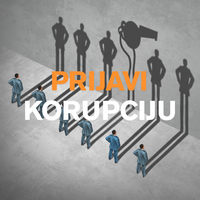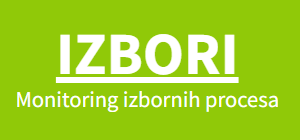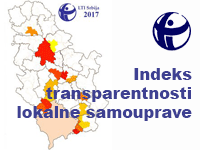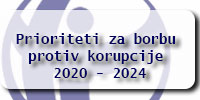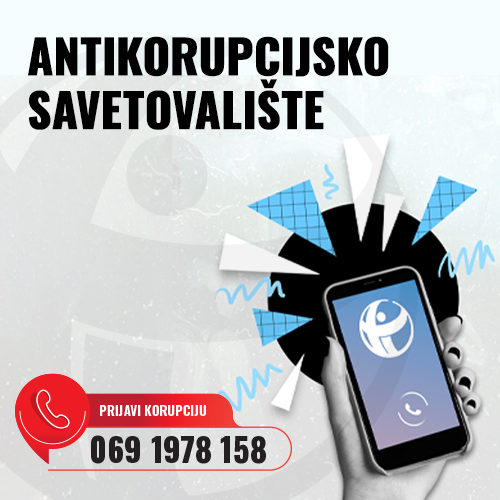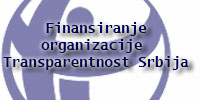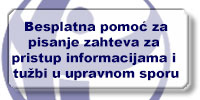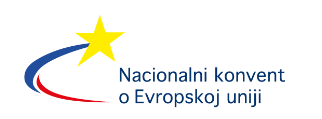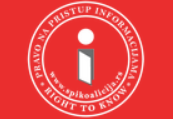TS presented CPI 2018
Transparency Serbia (Transparency International's chapter) presented Corruption Perception Index (CPI) for 2018. Serbia is still considered as the country with a high level of corruption, with a score of 39 of possible 100 points. This year Serbia dropped ten places on the list of the Corruption Perceptions Index (CPI) and takes 87th place. After a small increase, the score of Serbia is now the same as it was in 2012 and there are no significant changes for more than ten years. This year, we share 87th place, out of 180 countries, with China. In the previous survey, Serbia had two points more and was on 77th place.
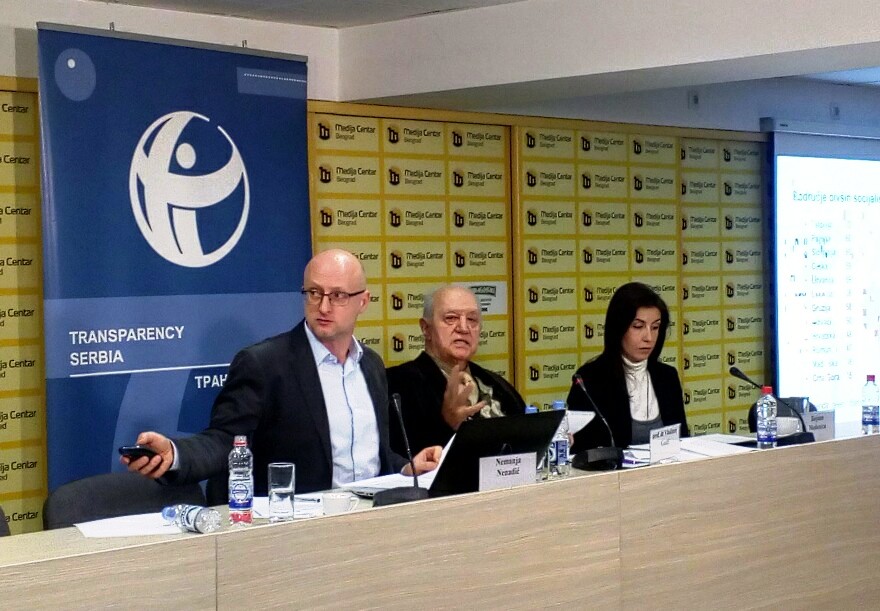 According to estimation of Transparency Serbia, Serbia is stagnated in research because neither preventive nor repressive law mechanisms against corruption were applied consistently. Even those cases of suspicion of corruption that are documented in the reports by state authorities and journalistic surveys were not examined, as shown by the recently published TS survey. Concerning the prevention, during the last year were not applied main anticorruption provisions of the Law on Public Enterprises (selection and dismissal of directors), Law on Civil Servants (selection and dismissal of civil servants on the appointed positions), Law on Public Procurement (penalties), Law on Anticorruption Agency (related with the abuse of public function for party promotion) and Law on Free Access to Information of Public Importance (enforcement of Commissioner’s decisions).
According to estimation of Transparency Serbia, Serbia is stagnated in research because neither preventive nor repressive law mechanisms against corruption were applied consistently. Even those cases of suspicion of corruption that are documented in the reports by state authorities and journalistic surveys were not examined, as shown by the recently published TS survey. Concerning the prevention, during the last year were not applied main anticorruption provisions of the Law on Public Enterprises (selection and dismissal of directors), Law on Civil Servants (selection and dismissal of civil servants on the appointed positions), Law on Public Procurement (penalties), Law on Anticorruption Agency (related with the abuse of public function for party promotion) and Law on Free Access to Information of Public Importance (enforcement of Commissioner’s decisions).
Draft of the Revised Action Plan for Chapter 23, main document of the Government policy in this field, does not represent a good basis for improving situation. In fact, the Plan keeps the same unambitious concept as well as the existing text from 2016, only concludes many years of delay and does not give the assurance that anything will change in the future.
Based on the data published so far, it is still not clear whether the long-announced work of four special prosecutor’s departments for fighting corruption, since March 1st 2018, brought some positive changes in the prosecution of corruption regarding the number of charges and confiscation of properties. However, it is obvious that, based on the experiences of citizens and revealed doubts about corruption, many cases have not yet been reported and investigated. When it comes to this type of crime, the certainty of discovering the perpetrators is far more important then the amount of imposed sentence.
The bad perception of corruption, according to estimation of TS, is largely influenced by lack of transparency in decision-making and the absence of competition in the conclusion of the large contracts of Government. This is most visible in cases of unrevealed contracts and other documents, as well as in the cases of procurement of works for the construction of large infrastructural facilities by direct contracting, at prices whose market-base is doubtful.
Details on the Corruption Perception index and results
Corruption Perception Index is being created for twenty-four years in a row, by a globally leading anti-corruption organization, Transparency International. This year, 180 countries and territories are ranked, same as in the previous survey. Countries are scored on ascale from 100 (very clean) to 0 (highly corrupted). This year, Serbia is this ranked 87th (last year 77th), with a score of 39, which is two points lower than in the previous year. Fluctuations are minimal and the last significant progress was recorded more than ten years ago. With a score of 39, Serbia is in the group of countries with widespread corruption (under 50). This score puts us four points lower below the world average (about 43) and eighteen points lower below the average of Europe.
On the top of the list are Denmark with 88 and New Zealand with 87 points, while at the bottom are Somalia with 10 and Syria and South Sudan with 13 points. Among the former socialist countries of Europe, best placed is Estonia with a score of 73, and from the former Yugoslavia Slovenia with 60 points. Among the countries of wider region that are not members of the EU, the best perception is for Georgia (58 points).Worse ranked neighbors are Bosnia and Herzegovina (38), Macedonia (37) and Albania (36). Kosovo is subject of special research and its evaluation is 37 (two points worse than in 2017).
It is important to point out that the citizens of Serbia have perception of widespread of corruption as well, which stems from the results of researches carried out on a nationals ample (e.g. GAI-USAID survey project in 2018, previously published The Global Corruption Barometer of Transparency International, previously published UNDP surveys), although in these surveys the fluctuations in the perception of corruption are significantly higher. High perception of corruption is a problem, because of creating prejudice that without corruption no job can be done. However, the priority of the state authorities should be to prevent, detect and punish existing corruption, and not changing perception of its widespread.
CPI considers 13 relevant surveys that measure perception of corruption in the public sector. These surveys represent the opinion or perception of corruption of state officials and civil servants by those who do business with them or who advise businessman, governments and international institutions. Surveys must be published in the last 24 months and there must be at least three such data sources for one country to be ranked.
This year, Serbia was comprehended with a total of eight relevant surveys (same as in 2017), which guarantees a higher degree of reliability of findings, as well as comparability of data with those from previous years. Surveys used were from the Global Insight Country Risk Ratings, Bertelsmann Foundation, World Economic Forum, the Economist Intelligence Unit, Freedom House, International Country Risk Guide, World Justice Project Rule of Law Index and Varieties of Democracy Project.
All surveys relevant for Serbia, except of one, were published during 2018, and some of them were conducted during 2017. Ratings from individual surveys vary from 34 to 44. The standard deviation is (2.89).





